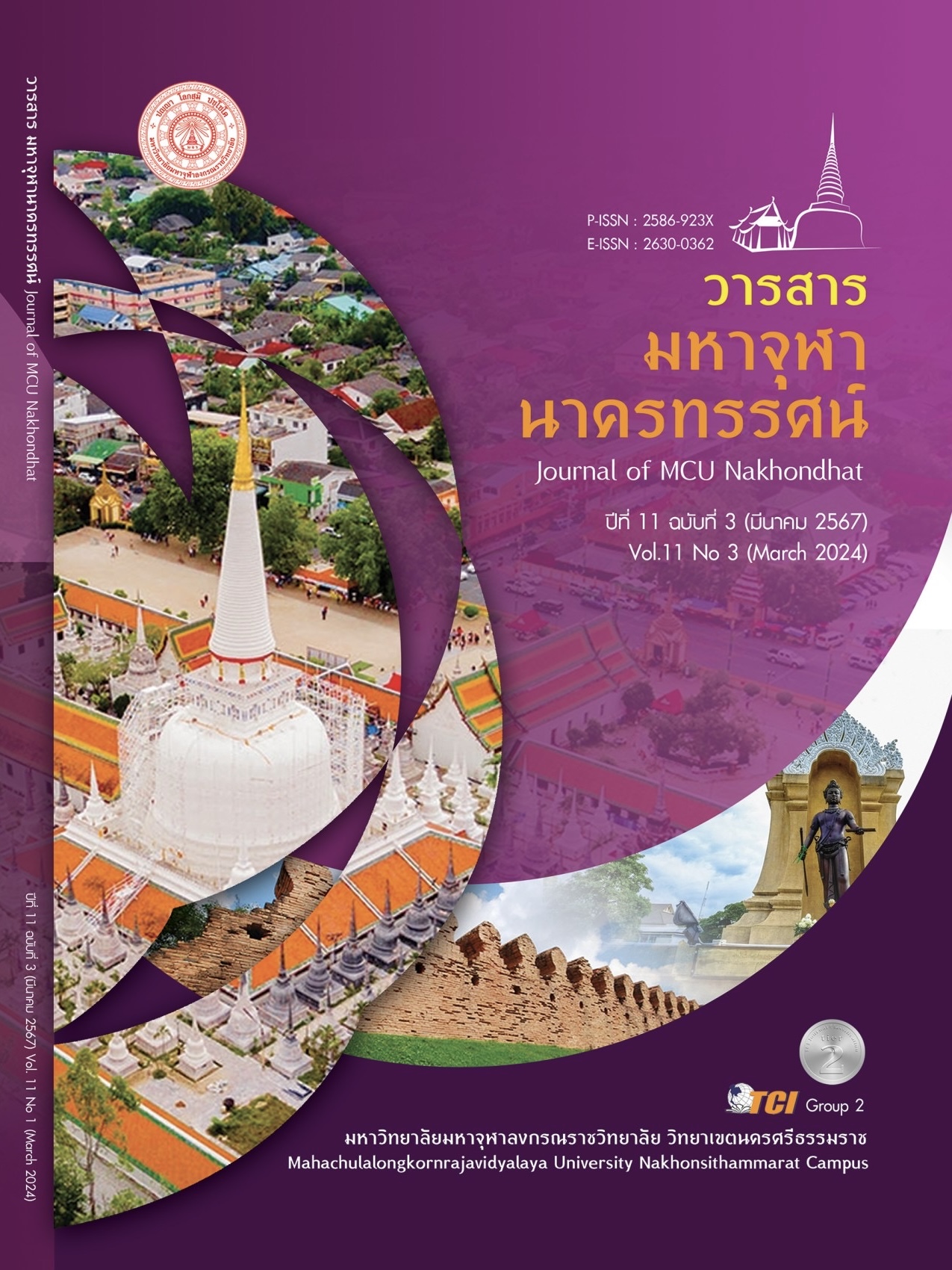THE EXPOSURE OF CONTENT COMPONENTS’ FOOD TRAVEL YOUTUBERS THAT AFFECT YOUTUBE CHANNEL VIEWERS’ DECISION TO PARTICIPATE IN CULTURAL FOOD TOURISM
Main Article Content
Abstract
This research article is quantitative research and has the objectives to 1) study the demographics 2) study the content components’ food travel YouTubers and 3) study the decision to participate in cultural food tourism. A questionnaire was used as an instrument for collecting data from 400 population in YouTube channel viewers who are watching at least 1 specific YouTube channel. Choosing by probability sampling and multi-stage sampling. Both description statistics and inferential statistics were used in data analysis. The inferential statistics used to test hypotheses were t-test, One - way ANOVA and multiple regression analysis. The study found that most of the respondents were females aged between 40 and 49 years who were bachelor’s degree graduates and working as employees, business owners and freelancers who earned an average monthly income between 25,001 and 35,000 baht. The results of the hypotheses test showed that the differences in demographics of YouTube channel viewers have different opinions about the content components’ food travel YouTubers at the 0.05 level of significance except gender, the content components’ food travel YouTubers affects the YouTube channel viewers’ decision to participate in cultural food tourism at the 0.05 level of significance and the differences in demographics of YouTube channel viewers have the differences of the YouTube channel viewers’ decision to participate in cultural food tourism at the 0.05 level of significance except gender and occupation.
Article Details

This work is licensed under a Creative Commons Attribution-NonCommercial-NoDerivatives 4.0 International License.
References
กระทรวงการท่องเที่ยวและกีฬา. (2566). สถิติด้านการท่องเที่ยว ปี 2566 (Tourism Statistics 2023). เรียกใช้เมื่อ 14 กุมภาพันธ์ 2566 จาก https://www.mots.go.th/news/category/704
กิตติพงษ์ เรือนทิพย์ และจารุวรรณ เหล่าสัมฤทธิ์. (2563). Research Note Krungthai COMPASS ประเมิน “เราเที่ยวด้วยกัน” กระตุ้นท่องเที่ยวไทยได้ 3.6 - 6.2 หมื่นล้านบาท. เรียกใช้เมื่อ 14 กุมภาพันธ์ 2566 จาก https://krungthai.com/Download/economyresources/EconomyResourcesDownload_579Research_Note_20_07_63.pdf
เกียรติคุณ เยาวรัตน์. (2560). กลยุทธ์การสร้างคลิปวิดีโอในสื่อสังคมออนไลน์เพื่อแรงจูงใจในการออกกำลังกายด้วยการวิ่ง กรณีศึกษา เฟซบุ๊คแฟนเพจ “Runner’s Journeys”. กรุงเทพมหานคร: มหาวิทยาลัยกรุงเทพ.
ฉัตยาพร เสมอใจ และมัทนียา สมมิ. (2545). พฤติกรรมผู้บริโภค. กรุงเทพมหานคร: เอ็กซเปอร์เน็ท.
ฐานเศรษฐกิจ. (2564). อโกด้าเปิดเทรนด์ท่องเที่ยวหลังโควิดของคนไทย เผย Gen X อยากเที่ยวมากที่สุด. เรียกใช้เมื่อ 14 กุมภาพันธ์ 2566 จาก https://www.thansettakij.com/lifestyle/500719
ณชรต อิ่มณะรัญ. (2564). องค์ประกอบทางการสร้างสรรค์วีล็อกเพื่อการสื่อสารการท่องเที่ยว. วารสารนิเทศศาตรปริทัศน์, 25(1), 96-109.
สุปัญญา ไชยชาญ. (2551). การบริหารการตลาด. (พิมพ์ครั้งที่ 6). กรุงเทพมหานคร: พี.เอ.ลีฟวิ่ง.
KTC PHONE. (2566). เทรนด์การท่องเที่ยว 2023 ชาร์จพลังความสุขปลอดภัยจากโควิด. Retrieved กุมภาพันธ์ 14, 2566, from https://www.ktc.co.th/article/travel-guide/travel-trends-2023
PPTV. (2565). ไทยยังแซ่บ! 3 สตรีทฟู้ด ติด The best โลก จาก 50 เมนูของเอเชีย. Retrieved กุมภาพันธ์ 14, 2566, from https://www.pptvhd36.com/news/%E0%B9%84%E0%B8%A5%E0%B8%9F%E0%B9%8C%E0%B8%AA%E0%B9%84%E0%B8%95%E0%B8%A5%E0%B9%8C/179304
Relevant Audience. (2566). 18 สถิติบน YouTube ที่นักการตลาดต้องรู้ในปี 2023. Retrieved กุมภาพันธ์ 14, 2566, from https://www.relevantaudience.com/th/18-youtube-statistics-marketers-must-know-in-2023/


